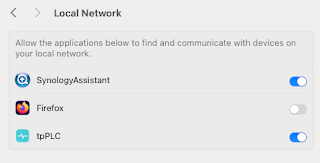I posted about the Liberty Profile Developer Tools previously: -
WebSphere Application Server Developer Tools are a lightweight set of tools for developing, assembling, and deploying applications to different WebSphere Application Server runtimes, including V8.5 Liberty Profile, V8.5, V8.0, and V7.0.
This post is a more detailed walkthrough of my own experiences.
Firstly, a quick caveat - this is the story of MY journey, and what worked for ME. I hope it works for you, but please remember that there are other, more official sources of support out there, including the aforementioned WASdev community.
As an example, these posts: -
In this video Tim deBoer gives an overview of the Liberty Profile from scratch including the debug capabilities and the WebSphere Application Server Developer Tools.
Developers and IT professionals can use these free education modules on this page to get started with the IBM WAS Liberty Profile. The modules below offer step-by-step guidance to get you started using WAS Liberty.
IBM® WebSphere® Application Server Developer Tools provides plug-ins from the Eclipse Marketplace that can be installed into an existing Eclipse environment to support development for WebSphere Application Server. This no-charge offering compliments the IBM WebSphere Application Server for Developers to provide a lightweight, development environment for the developer desktop. The plug-ins include Web 2.0, JEE and OSGi tools that can be used with the required WebSphere server adapters (V7.0, V8.0, V8.5 or Liberty profile) for deployment to WebSphere Application Server.
WebSphere Application Server V8.5 now includes a Liberty Profile is that optimizes developer productivity and web application deployment with the new Liberty Profile option, an ultra lightweight, fast starting, highly composable application server profile. The Liberty profile can be downloaded separately or with WAS for Developers.
IBM WebSphere Application Server for Developers is a no-charge WebSphere Application Server development runtime for projects that don't warrant the expense of a priced and supported runtime on the developer desktop. The development time runtime environment allows developers to test their applications on their desktop before moving the application into a production runtime environment.
WebSphere Application Server V8.5 now includes a Liberty Profile is that optimizes developer productivity and web application deployment with the new Liberty Profile option, an ultra lightweight, fast starting, highly composable application server profile. The Liberty profile can be downloaded separately or with WAS for Developers.
IBM WebSphere Application Server for Developers is a no-charge WebSphere Application Server development runtime for projects that don't warrant the expense of a priced and supported runtime on the developer desktop. The development time runtime environment allows developers to test their applications on their desktop before moving the application into a production runtime environment.
are definitely worth checking out BEFORE you proceed.
So I'm using an Apple MacBook, running OS X 10.7.5 Lion, so the Developer Tools and the Liberty profile seemed like a great way for me to develop and test my code on a real instance of WAS without needing to fire up a VM ( which I do do on a regular basis ). It's also quite cool, in a geeky sort of way :-)
The firs thing that one requires, and this caught me out, is the RIGHT version/deployment of Eclipse: -
Eclipse is a multi-language software development environment comprising an integrated development environment (IDE) and an extensible plug-in system. It is written mostly in Java. It can be used to develop applications in Java and, by means of various plug-ins, other programming languages including Ada, C, C++, COBOL, Fortran, Haskell, Perl, PHP, Python, R, Ruby (including Ruby on Rails framework), Scala, Clojure, Groovy, Android and Scheme. It can also be used to develop packages for the software Mathematica. Development environments include the Eclipse Java development tools (JDT) for Java, Eclipse CDT for C/C++ and Eclipse PDT for PHP, among others.
The WASdev site tells you to: -
I already had Eclipse installed, so read straight past this - that was my first mistake.
So this is what I had: -
Note that it does NOT explicitly mention Java Enterprise Edition ( Java EE ) :-)
This is what I SHOULD have used: -
Without the right version of Eclipse, I wasn't even able to start the installation of the WAS tools. This turned out to be because the basic slim-line version that I had did NOT include the Eclipse Marketplace Client: -
Eclipse Marketplace Client (MPC) is a rich client interface for browsing and installing the Eclipse based solutions listed on the Eclipse Marketplace portal. It is a new feature that allows Eclipse users to discover and install Eclipse solutions directly into their Eclipse installation.
which provides for drag and drop installation, amongst other things.
Once I downloaded the RIGHT version of Eclipse, from here: -
I was on the right track. As a Mac user, I actually went for: -
which resulted in: -
-rw-r--r--@ 1 david_hay staff 211M 3 Oct 17:31 eclipse-jee-indigo-SR2-macosx-cocoa-x86_64.tar.gz
I unpacked: -
$ tar xvzf eclipse-jee-indigo-SR2-macosx-cocoa-x86_64.tar.gz
and started Eclipse: -
$ cd eclipse
$ ./eclipse
and this is what I ended up with: -
It was then a simple matter to visit my own blog post: -
and drag and drop the button: -
to the Eclipse menu bar: -
which resulted in: -
etc.
I did also see this: -
and, eventually, ended up with this: -
Having restarted Eclipse, I'm now writing my first ( on this platform ) Java servlet application.
As I regularly Tweet, #LifeIsGood

















No comments:
Post a Comment